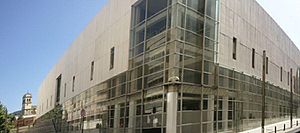
Andalusia is the southernmost autonomous community in Peninsular Spain. It is the most populous and the second-largest autonomous community in the country. It is officially recognised as a historical nationality and a national reality. The territory is divided into eight provinces: Almería, Cádiz, Córdoba, Granada, Huelva, Jaén, Málaga, and Seville. Its capital city is Seville. The seat of the High Court of Justice of Andalusia is located in the city of Granada.
Year 1492 (MCDXCII) was a leap year starting on Sunday of the Julian calendar.

Granada is the capital city of the province of Granada, in the autonomous community of Andalusia, Spain. Granada is located at the foot of the Sierra Nevada mountains, at the confluence of four rivers, the Darro, the Genil, the Monachil and the Beiro. Ascribed to the Vega de Granada comarca, the city sits at an average elevation of 738 m (2,421 ft) above sea level, yet is only one hour by car from the Mediterranean coast, the Costa Tropical. Nearby is the Sierra Nevada Ski Station, where the FIS Alpine World Ski Championships 1996 were held.

Federico del Sagrado Corazón de Jesús García Lorca, known as Federico García Lorca, was a Spanish poet, playwright, and theatre director. García Lorca achieved international recognition as an emblematic member of the Generation of '27, a group consisting mostly of poets who introduced the tenets of European movements into Spanish literature.

Bogotá, officially Bogotá, Distrito Capital, abbreviated Bogotá, D.C., and formerly known as Santa Fe de Bogotá during the Spanish Colonial period and between 1991 and 2000, is the capital city of Colombia, and one of the largest cities in the world. The city is administered as the Capital District, as well as the capital of, though not part of, the surrounding department of Cundinamarca. Bogotá is a territorial entity of the first order, with the same administrative status as the departments of Colombia. It is the political, economic, administrative, and industrial center of the country.
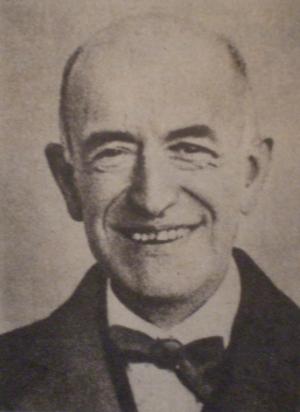
Manuel de Falla y Matheu was an Andalusian Spanish composer and pianist. Along with Isaac Albéniz, Francisco Tárrega, and Enrique Granados, he was one of Spain's most important musicians of the first half of the 20th century. He has a claim to being Spain's greatest composer of the 20th century, although the number of pieces he composed was relatively modest.

The 15 departments and 2 autonomous regions of Nicaragua are divided into 153 municipalities. The formation and dissolution of municipalities is governed by the Law of Municipalities, drafted and approved by the National Assembly on July 2. 1988.
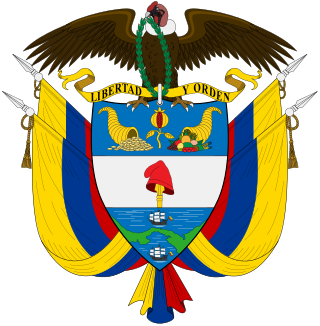
The coat of arms of Colombia contains a shield with numerous symbols. Perched on top of the shield is an Andean condor holding an olive crown and the condor symbolizing freedom. The national motto, Libertad y Orden, is on a scroll in between the bird and the shield in black font over golden background. The condor is depicted as displayed and looking to the right.

The coat of arms of Spain represents Spain and the Spanish nation, including its national sovereignty and the country's form of government, a constitutional monarchy. It appears on the flag of Spain and it is used by the Government of Spain, the Cortes Generales, the Constitutional Court, the Supreme Court, and other state institutions. Its design consists of the arms of the medieval kingdoms that would unite to form Spain in the 15th century, the Royal Crown, the arms of the House of Bourbon, the Pillars of Hercules and the Spanish national motto: Plus Ultra. The Monarch, the heir to the throne and some institutions like the Senate, the Council of State and the General Council of the Judiciary have their own variants of the coat of arms.
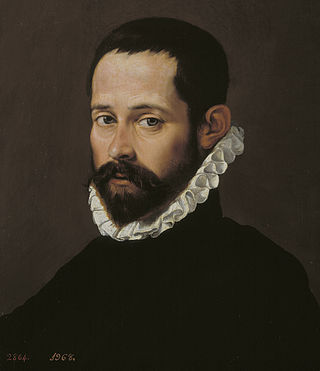
Diego Hurtado de Mendoza, Spanish novelist, poet, diplomat and historian, born in Granada in late 1503 or early 1504.

Spain is a Christian majority country, with Islam being a minority religion, practised mostly by the immigrants and their descendants from Muslim majority countries. As of 2019, 4.45% of the Spanish population are Muslims.
"Granada" is a song written in 1932 by Mexican composer Agustín Lara. The song is about the Spanish city of Granada and has become a standard in music repertoire.

Granada Club de Fútbol, known simply as Granada or "Graná", is a professional Spanish football club based in the city of Granada, in the autonomous community of Andalusia, that plays in the LaLiga EA Sports, after being promoted from LaLiga Hypermotion in the 2022–23 season. Its main shareholder is the Chinese company Desport, and its president Jiang Lizhang. The club was founded in 1931 with the name of Club Recreativo Granada, and plays its home matches at the Nuevo Estadio de Los Cármenes.
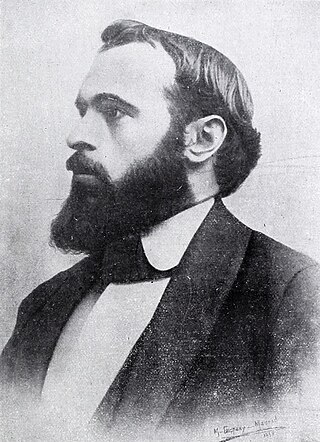
Ángel Ganivet García was a Spanish writer and diplomat. He was considered a precursor to the Generation of '98.
The University of Granada is a public university located in the city of Granada, Spain, and founded in 1531 by Emperor Charles V. With more than 60,000 students, it is the fourth largest university in Spain. Apart from the city of Granada, UGR also has campuses in Ceuta and Melilla.
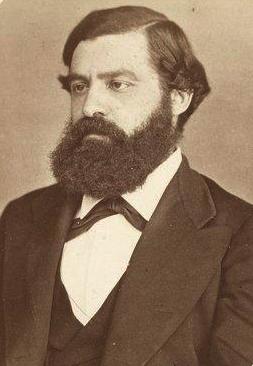
Ezequiel Uricoechea Rodríguez was a Colombian linguist and scientist. He is considered one of the first Colombian scientists and a pioneer in Spanish-language linguistics.

Juan de Castellanos was a Spanish poet, soldier and Catholic priest who lived in the New Kingdom of Granada. As one of the early Spanish chroniclers he has contributed to the knowledge of the indigenous peoples of the Americas, mainly the Muisca.

The New Granada Military University, also called UMNG, is a public, private, self-funded, national, coeducational university based in the city of Bogotá, Colombia. The university has 8 faculties, 20 undergraduate, 66 graduate programs, 9 master's degrees, 44 Diploma and 52 research programs. The university offers academic programs for part-time education, being one of the most important nationally.
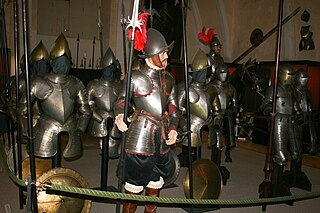
Hernán Pérez de Quesada, sometimes spelled as Quezada, was a Spanish conquistador. Second in command of the army of his elder brother, Gonzalo Jiménez de Quesada, Hernán was part of the first European expedition towards the inner highlands of the Colombian Andes. The harsh journey, taking almost a year and many deaths, led through the modern departments Magdalena, Cesar, Santander, Boyacá, Cundinamarca and Huila of present-day Colombia between 1536 and 1539 and, without him, Meta, Caquetá and Putumayo of Colombia and northern Peru and Ecuador between 1540 and 1542.
